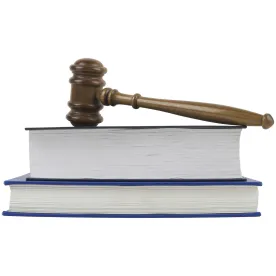The US Court of Appeals for the 11th Circuit vacated a district court’s judgment for a second time, finding that the lower court misinterpreted its instructions on remand and failed to give each excerpt of the copyrighted works the holistic analysis the Copyright Act demands. Cambridge University Press, et al. v. J.L. Albert, et al., Case No. 16-15726 (11th Cir. Oct. 19, 2018) (Pryor, J).
Cambridge University Press, Oxford University Press and Sage Publications publish academic works. Those works are marketed to university professors so that the professors will assign them as required reading in their courses. The publishers also license digital excerpts of their works and “permissions,” which allow users to photocopy and digitally reproduce portions of their works.
Georgia State University pays to use licensed excerpts in paper course packs that the University bookstore assembles and sells to students. The University also maintains servers that enable University personnel to upload digital copies of excerpts and allow students enrolled in courses to download the excerpts. The majority of course readings are made available in this manner. Neither the University nor the students pay for the use of the digital excerpts.
The publishers sued the University for direct, contributory and vicarious copyright infringement. After a bench trial, the district court ruled that the University infringed the copyrights of the publishers in only five instances. The court found that the publishers established a prima facie case of 48 instances of infringement, but ruled that the University established a fair-use defense for 43 of the excerpts. The Copyright Act enumerates four factors to be considered in finding fair use instead of infringement. The first factor relates to the purpose and character of the use, including whether the use is commercial or educational. The second factor is the nature of the work. The third factor relates to the amount and substantiality of the portion used in relation to the work as a whole. And the fourth factor is the effect of the use upon the potential market for, or value of, the copyrighted work. The publishers appealed the original district court decision.
The 11th Circuit reversed, vacated and remanded the judgment, finding that the district court erred in its analysis of the fair-use defense. The Court upheld the district court’s analysis of factors one and four, but instructed the lower court to correct its erroneous application of factors two and three and its error in weighing and balancing all four factors in its overall analysis. On remand, the district court adjusted all four factors, changed its method of balancing the four factors, and reached a similar result, finding fair use for each of the same 43 excerpts. The publishers appealed again.
In the second appeal, the 11th Circuit found that the district court misinterpreted its mandate and misapplied the test of fair use on remand. The Court determined that the district court erred when it changed the fourth factor, noting that the appellate court’s holding on the first appeal precluded the district court from revisiting the fourth factor. With respect to weighing and balancing the factors, the Court concluded that the district court’s “quantitative rubric was an improper substitute for a qualitative consideration of each instance of copying in light of its particular facts.” The Court found that the district court also erred in its analysis of the third factor when it considered the cost of licensing the excerpts, noting that “the Act does not direct courts to consider the price of the unpaid use.”
The 11th Circuit ordered the lower court to reinstate its earlier finding with respect to factor four and omit any consideration of price from its analysis of factor three. Additionally, the district court was ordered to “eschew a quantitative approach to the weighing and balancing of the fair-use factors and give each excerpt the holistic, qualitative, and individual analysis that the Copyright Act demands.”




 />i
/>i

